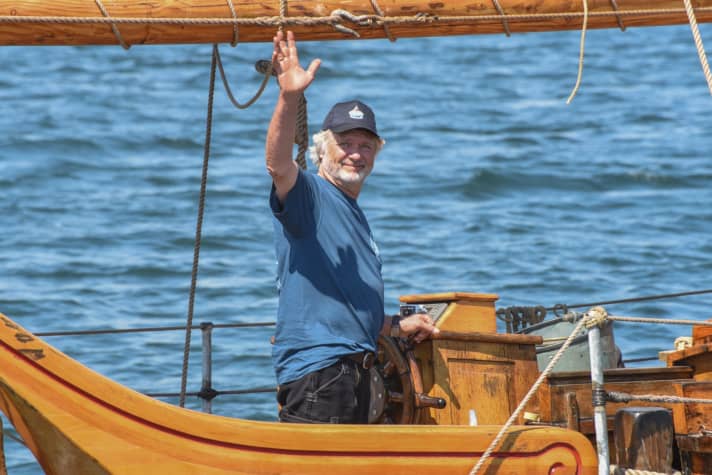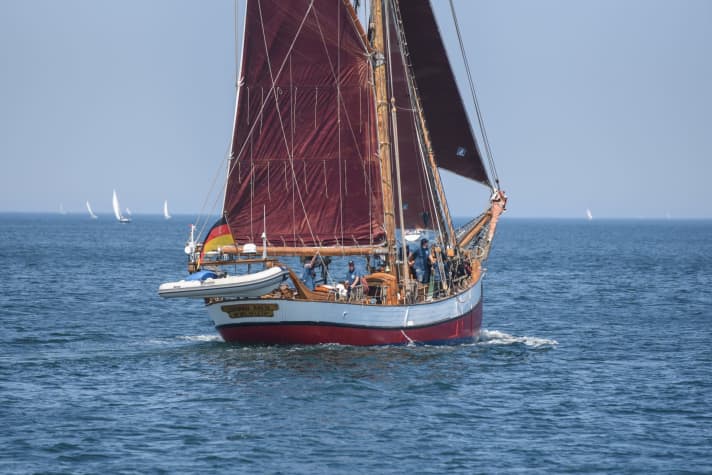
The Gulf Stream is weakening. But what are the consequences? Is there a threat of climate collapse? Is the ice in Greenland and at the poles melting even faster than it already is?
With his ship, the shark cutter "Dagmar Aaen", professional adventurer and climate activist Arved Fuchs and an international crew set off from Kiel yesterday, Thursday, on the fourth leg of his Ocean Change expedition. The journey will take them via the Shetlands and Faroe Islands to Iceland and on to Greenland. There it will call at Tasiilaq, Qaqortoq and Nuuk for several weeks. From mid-August, the "Dagmar Aaen" will then continue on to Labrador and Nova Scotia on Canada's east coast. Along the way, data will be collected to help gain more precise insights into the current state of the Gulf Stream.
This is an "immensely important heat pump for our planet", according to a statement from Fuchs' team at the start of the expedition. "The ocean current warms up in the Atlantic west of the African continent, flows to the Gulf of Mexico, warms up further there, picks up the Florida and Bahamas currents and then flows towards the British Isles, transporting as much energy as around one million nuclear reactors."
Researchers have been warning for some time that climate change is sapping the power of this "circulation pump": "Due to the increased influx of meltwater and the decline in sea ice, the 'Atlantic Meridional Overturning Circulation' (AMOC), as the Gulf Stream is known in science, has already weakened by around 15 per cent. This is dramatic, as the Gulf Stream is considered a tipping element: one of the systems in the global climate system that threatens to collapse above a certain level of global warming."
Arved Fuchs and the "Dagmar Aaen" are on their fourth leg of the Ocean Change expedition, equipped with state-of-the-art technology and scientifically supported by the Helmholtz Centre for Ocean Research Geomar, among others. A SubCtech system with probes from Sea & Sun Technology, for example, will continuously measure the salinity, carbon dioxide (CO2), conductivity, temperature, chlorophyll and oxygen in the seawater - down to a depth of 500 metres.

This seawater will circulate permanently through the system and send the data directly via satellite to Geomar, which will display these values live 24 hours a day on its Beluga navigation platform developed in 2021. The crew of the "Dagmar Aaen" will also install measuring buoys from Meteo France during the expedition, which will autonomously collect and send data for three years. Beluga will continuously report on the progress of the expedition.
Arved Fuchs also categorises this year's leg of the expedition series under three other important aspects: "Ships of Opportunity are vessels that travel in seldom-travelled regions of the world's oceans and are able to collect data on the state of the sea thanks to state-of-the-art digital measurement technology. The 'Dagmar Aaen' is one such Ship of Opportunity. It has been travelling the remote polar routes for decades. The interdisciplinary work between research institutes and sailing yachts, such as during the Vendée Globe sailing regatta or our current expedition, provides valuable data to research institutions such as Geomar."
Fuchs continues: "'Unite behind the science' is our motto. We need to strike a chord in people, because only then will we be able to solve the ecological and social challenges of our time. We will only be able to do this if we take as many people as possible with us and learn to better understand the global connections - that's why I have always seen my work as a 'citizen science project'. Everything is connected to everything else. And for that we need science, quite simply!"

